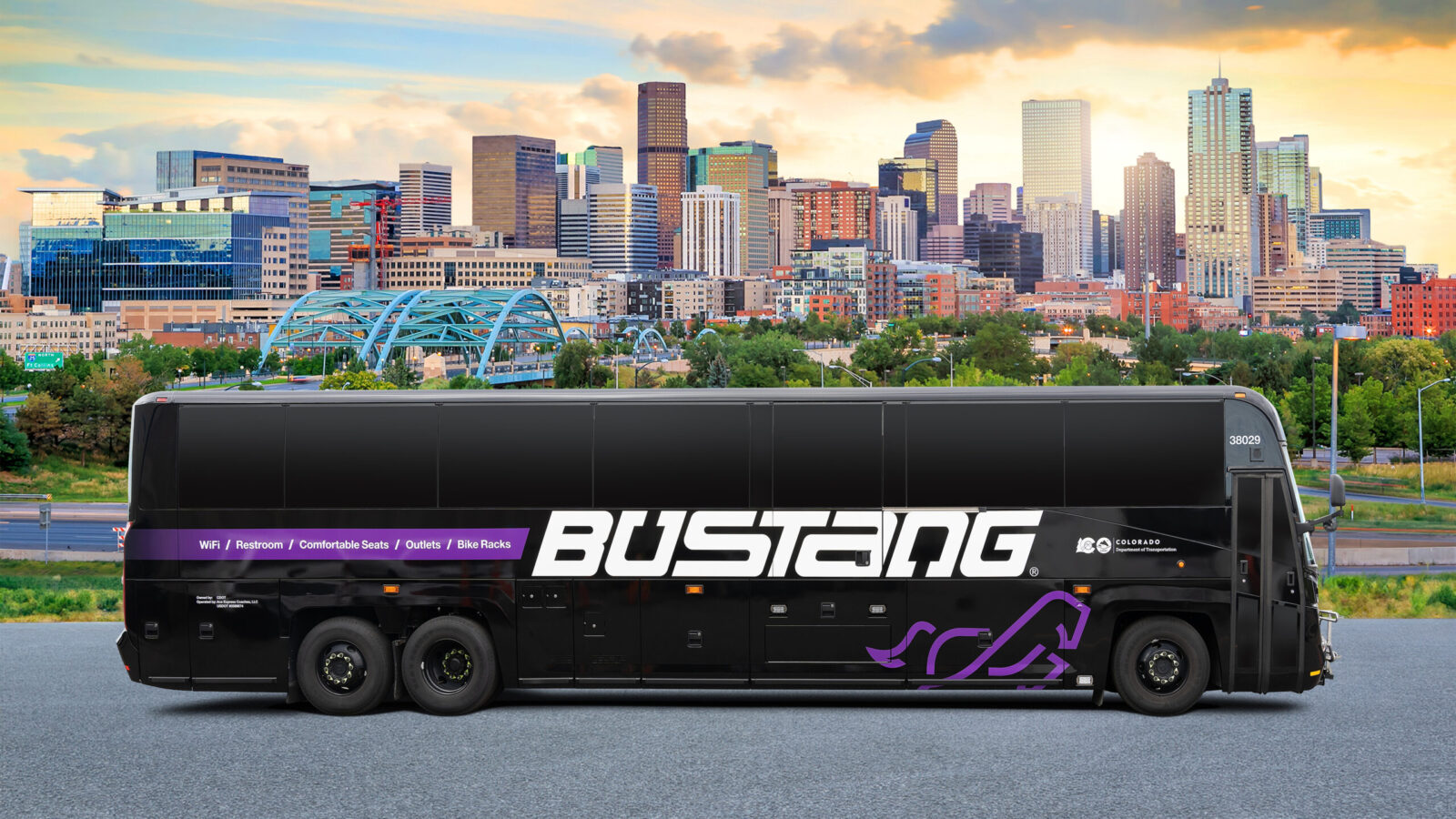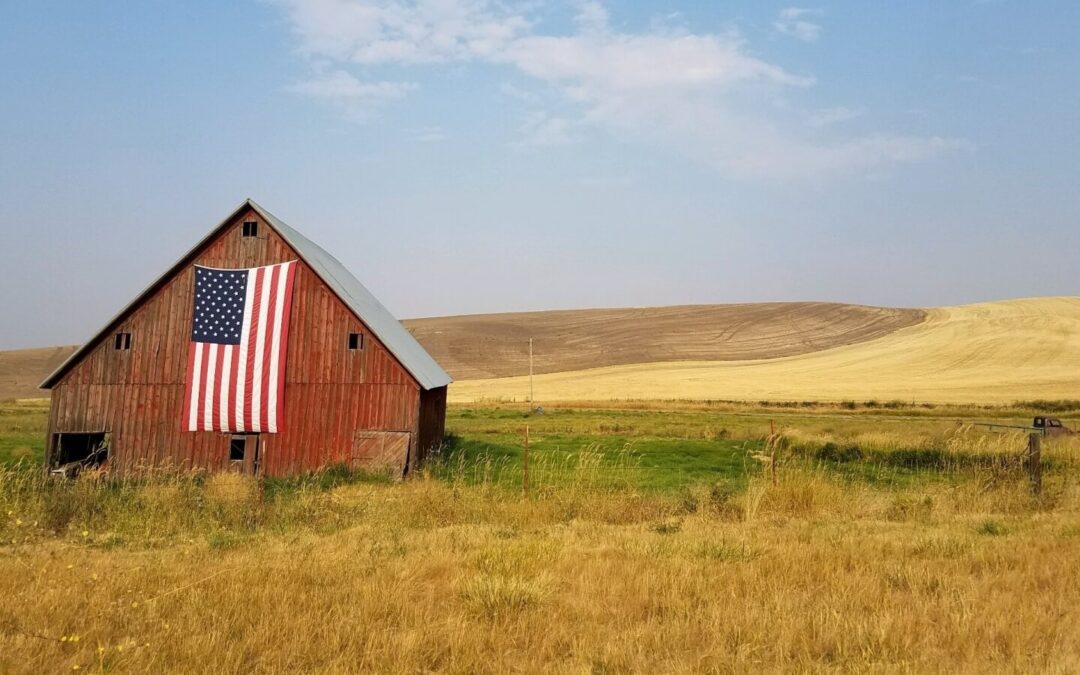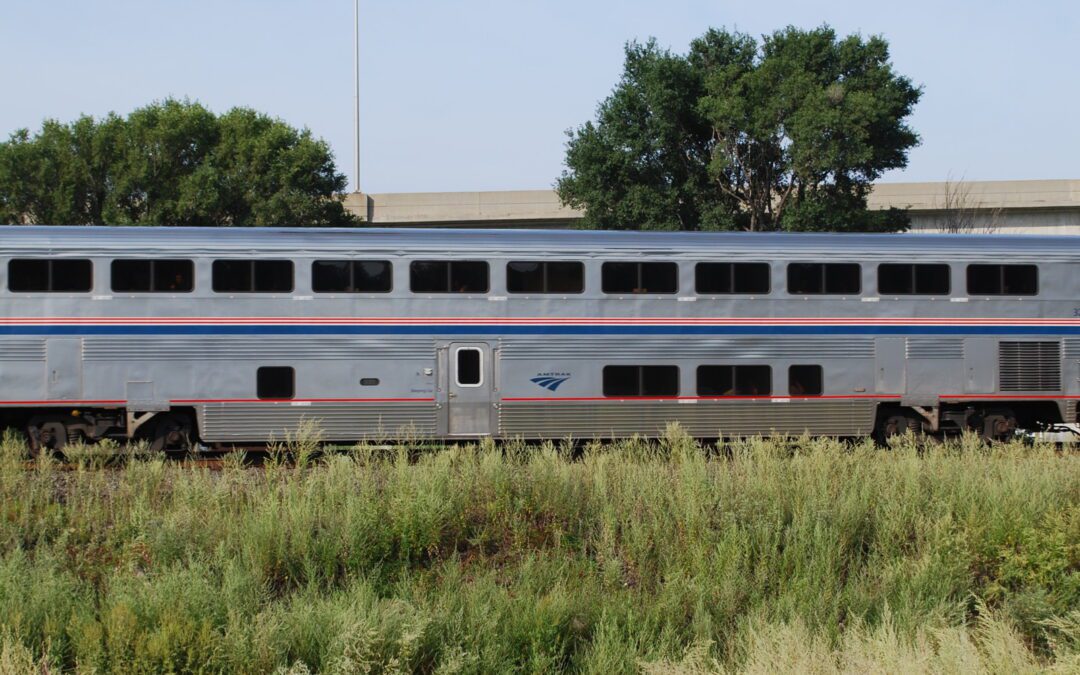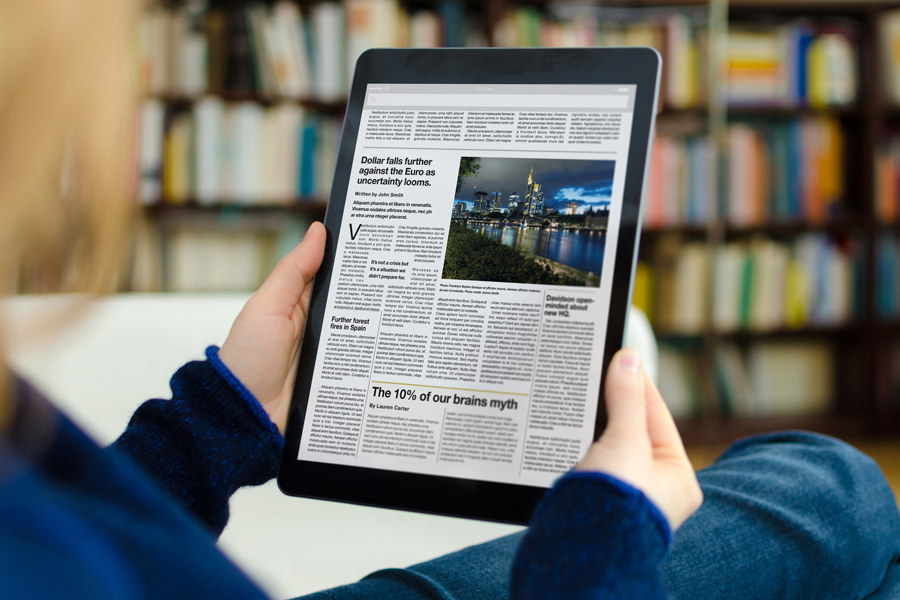How High-Speed Rail Will Reduce Carbon Emissions Getting serious about climate change means getting serious about building great trains. Join Us The best way to cut carbon emissions while expanding our freedom to move Take a look at the numbers below from...
A leading example of a state-led intercity bus program
Colorado is revolutionizing its transportation system by shifting its spending away from highway expansion and toward trains, transit, and buses, and by building more infrastructure for bikers and pedestrians. The New York Times reported on this shift last year, noting that by canceling a project to widen Interstate 25, the Colorado Department of Transportation (CDOT) had “offered a new vision for the future of transportation planning.” (Watch our recent webinar with author Megan Kimble.)
One high-profile result is the push for quality trains in the Front Range. Plans are moving ahead for new passenger-rail service in the corridor that runs from Fort Collins (in the north) to Pueblo (in the south). Bustang, the state’s intercity bus system, has received less media attention than Front Range rail. Even so, it’s playing a major role in Colorado’s transportation revolution.
The pivot point was 2019, when Colorado passed a bill mandating that the state cut greenhouse-gas emissions by 90 percent by 2050. The popularity of Bustang—which had launched in 2015—underscored that transportation was low-hanging fruit in pursuing that goal.
In 2020, Colorado’s legislature passed a law requiring CDOT to show how new projects would cut greenhouse-gas emissions. “Within a year,” the Times noted, CDOT “had canceled two major highway expansions, including Interstate 25, and shifted $100 million to transit projects.” In a transportation vision for 2035 published earlier this year, CDOT set the goal of doubling Colorado’s non-auto transportation trips—from 9.6% to 19.2%—in a decade. The goal includes building more than 3,500 miles of new bike lanes, creating 1,345 miles of new sidewalk, and ensuring that more than half of new housing is built in transit-oriented areas.
And last year, the General Assembly passed three bills that will raise a total of about $170 million annually for buses, trains, and transit. That’s about 10 times the previous funding level from the state. Of that, $60 million will go to statewide systems like Bustang and Front Range Passenger Rail. The remaining $110 million will go to supporting local and regional systems. The new money comes from new taxes on rental cars and oil and gas.
“For the first time ever,” as one analyst observed, Colorado’s transit agencies can “rely on state money to operate new routes or improve the frequency of the routes they have.”
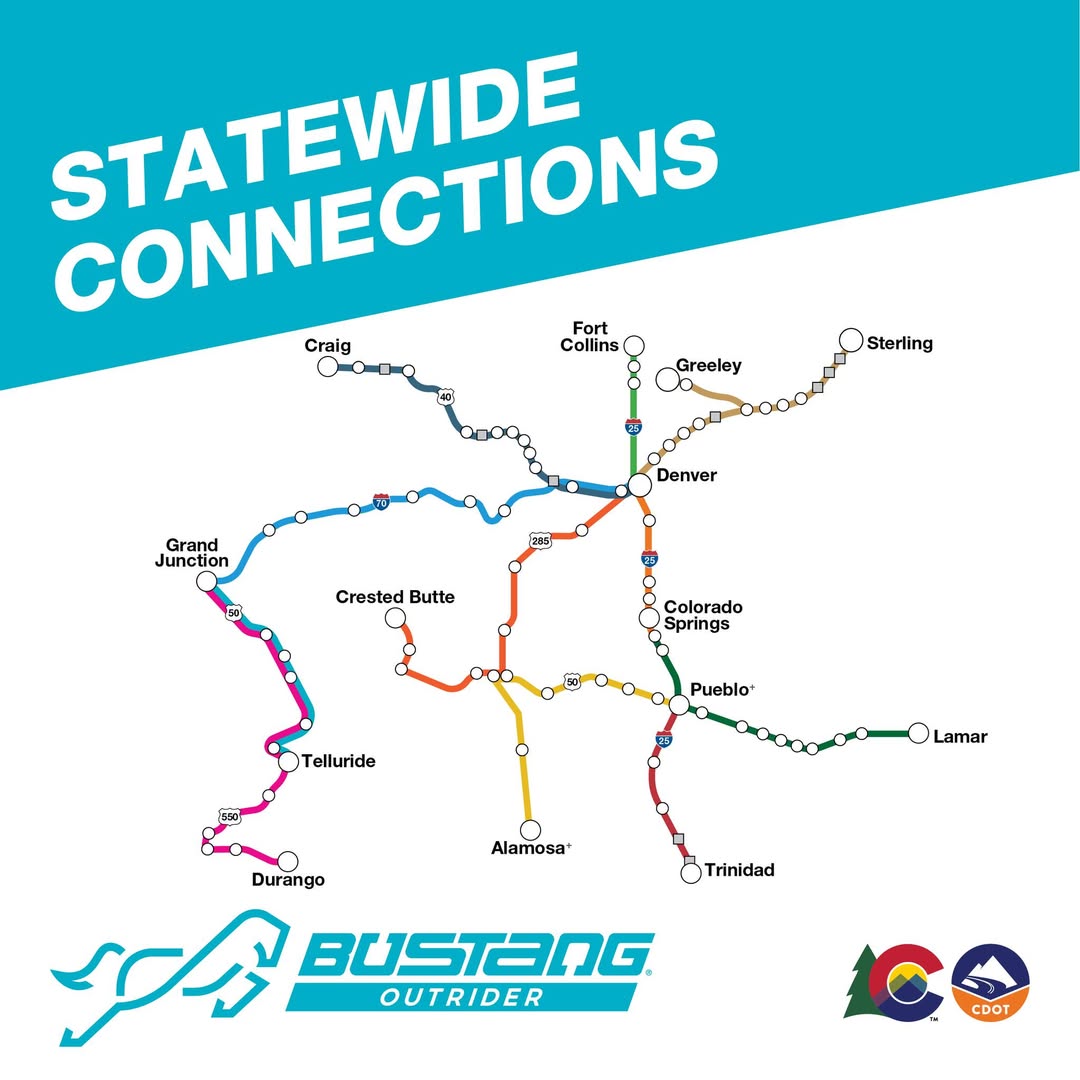
Bustang rising
The number of communities in America served by intercity buses fell by about 80 percent between 1965 and 2005—from 23,000 to 4,500. But after decades of decline, states are beginning to rediscover intercity bus systems. Bustang and California’s Thruway system are at the cutting edge of the trend, along with growing systems in Virginia and Oregon.
Bustang’s origins date to 2008, when CDOT completed an “intercity and regional bus network plan.” Since its launch in 2015, Bustang’s services and ridership have steadily increased. It served about 100,000 passengers in its first year, 238,000 in FY 2019, and about 290,000 in FY 2024. Its projected ridership this year is 325,000.
Bustang’s buses feature Wi-Fi, phone-charging portals, and big windows. The core service consists of three lines—South, North, and West—radiating out from Denver and terminating in Colorado Springs, Fort Collins, and Grand Junction, respectively. The success of these core lines has led to additional services under different names. Bustang Outrider launched in 2018 and provides service between rural communities. Pegasus is a shuttle-bus service running between Denver and several mountain destinations. And Snowstang is a seasonal (December to May) service that runs between Denver and popular tourist destinations, especially ski resorts. Bustang also runs a variety of other seasonal routes, including buses to Broncos games during the NFL season.
Last fall, Bustang added substantial service on the South, North, and West lines after CDOT bought 25 new motor coaches. Bustang now offers 12 weekday round trips on the North and South lines, and it offers 15 weekday round trips on the West line.
In February, CDOT published an updated version of its 10-year vision for Colorado’s transportation system. The plan calls for $120 million worth of investments in new buses and the construction of several “mobility hubs” in those corridors. The hubs are sites where multiple transportation modes—including transit, buses, bikes, and micro-mobility devices—“seamlessly integrate to allow for quick” mode-to-mode transitions and “efficient first- and-last-mile connections.” Five of the hubs are completed and two are in the final design stage.
For all its growth and impact, Bustang remains a tiny fraction of CDOT’s annual budget of more than $2 billion. It’s grouped in the “multimodal services” category, which includes several other sustainable transportation initiatives. Together, their $73 million in funding represents just 3.5 percent of the total CDOT budget for FY 2025-26.
Bustang’s annual operating costs are roughly $10 million, and its farebox recovery rate is about 38 percent. It is primarily state supported but also receives funding from a Federal Transit Administration program. CDOT contracts with a private company—Ace Express Coaches—to operate Bustang. Tickets for all routes are available through an app, but the ticketing and scheduling are not yet integrated with Amtrak.
Administratively, Bustang differs from most intercity bus systems in one key way: it’s a separate subdivision of the Transit and Rail division within CDOT, so it has a dedicated assistant director. A key to success for any system is having a leader who will advocate for it, make decisions, and take responsibility for its performance. Bustang has had that.
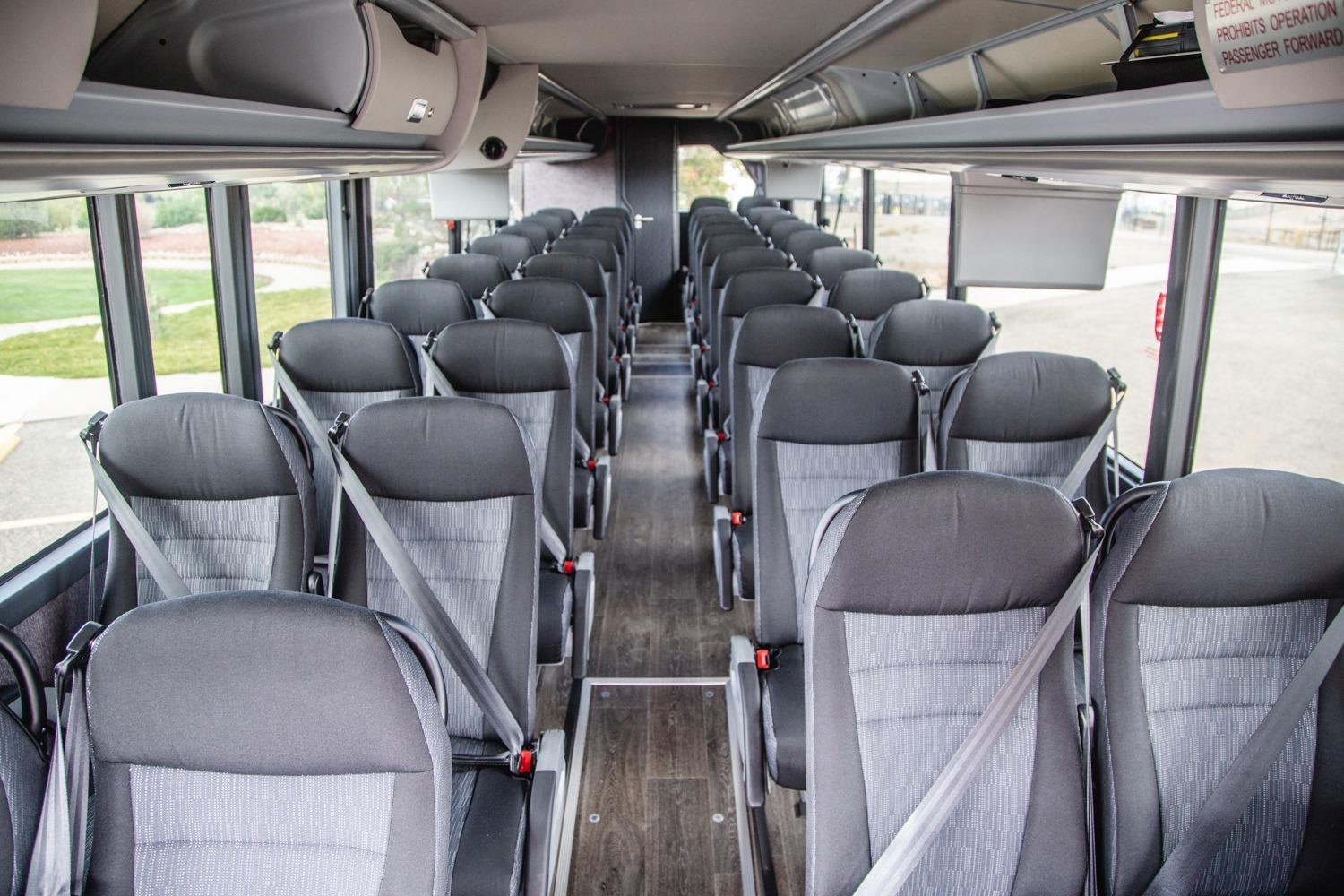
How Bustang drives transformative change
The critical takeaway from Bustang’s story isn’t that intercity bus service can be successful. The takeaway is that a successful intercity bus network can support and drive transformative changes across an entire transportation system—if a DOT has the will, leadership, and funding to make it happen.
Specifically, good intercity bus service is critical to building a thriving network of passenger trains, as the Alliance has argued. In fact, CDOT originally cast Bustang as sort of pilot program for passenger rail in the Front Range. Buses can also supplement train service, since new bus routes are relatively cheap and easy to add. Right now, for example, Bustang’s 12 daily round-trip runs on the North and South lines in the Front Range corridor are building a base of customers who are in the habit of taking public transportation instead of driving. Fast, frequent, and affordable trains in the corridor will expand that base, giving riders multiple options based on their needs and schedules.
Buses can also fill gaps in a train network by linking small towns to each other and to the regional rail system. In Colorado, for example, bus ridership in rural communities reached 17 million people in 2022. Second-place Michigan had only 4.7 million rural bus riders. California and North Carolina had 4 million. The success of the rural Outrider bus service has been a driver of Bustang’s strong, bipartisan support in Colorado. For example, one former Republican critic who voted to defund the service in 2016—Sen. Larry Crowder—came around by the late 2010s, telling Colorado Public Radio that “it’s done remarkably well in rural Colorado. Transportation is a huge issue for us and Bustang helps us fill that void.”
Big-picture, the point is that we need more of each sustainable mode: more trains, more buses, more options of all kinds. They build on each other to create a culture that allows people to leave their car at home yet still have reliable, affordable ways to move around. Quality intercity buses support quality trains. Quality trains support local transit systems. And quality transit supports pedestrian, biking, and micro-mobility infrastructure. Together, they create an entire culture of sustainable mobility options.
Climate change and safety are two great reasons to invest in this different kind of culture. But beyond these benefits, Bustang underscores the fact that wise transportation investments can build a healthy economy. Outrider buses open up job and educational opportunities to residents of rural areas. Snowstang buses boost the state’s tourism industry. And Pegasus shuttle buses carry commuters and vacationers from Denver to mountain destinations.
All of which means that Bustang’s success offers lessons that far apply far beyond Colorado’s borders. It shows that intercity buses can be a lever of transformative change, and it showcases how quality transportation can deliver a stronger economy, a cleaner environment, a higher quality of life, a more productive workforce, and a fairer system that works for everyone.

Get Involved
Tell the United States Congress: It’s time to reconnect the country with high-speed and regional rail!
The Latest from HSRA
Our Latest Blog Posts
Check out the latest news, updates, and high speed rail insights from our blog!
